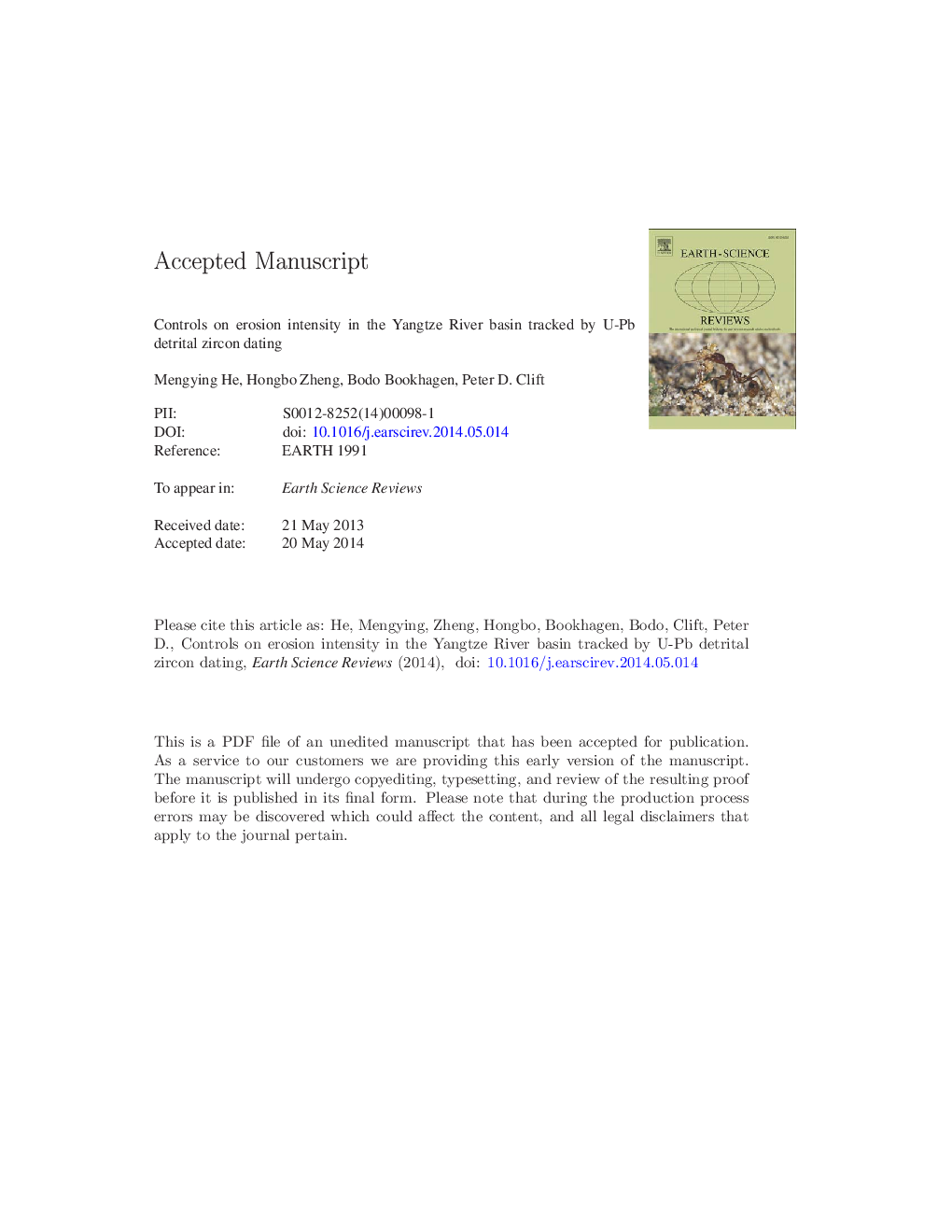| Article ID | Journal | Published Year | Pages | File Type |
|---|---|---|---|---|
| 6443017 | Earth-Science Reviews | 2014 | 68 Pages |
Abstract
The Yangtze River dominates the drainage of eastern Asia, yet the processes that control erosion within the basin are obscure, making the interpretation of the detritus record difficult. In this study we used U-Pb dating of zircon grains from the modern main stream and major tributaries to identify the sources of sediment production, based on the diversity of zircon ages associated with the different tectonic blocks over which the Yangtze flows. We demonstrate that tributaries in the central part of the catchment are the most important in supplying sand-sized sediment to the main stream, i.e., the Hanjiang, Xiangjiang and Jialingjiang, as well as along the main stream (Jinshajiang) between Panzhihua and Yibin. Surprisingly, the rivers draining the eastern edge of the Tibetan plateau do not appear to dominate the modern budget, despite their tectonic activity and steep topography. Sediment-productive drainages have high specific stream power (because of significant rainfall as well as steep topography), but are also the locations of early human settlement and agriculture. We suggest that it is the combination of high specific stream power and anthropogenic disruption to the landscape that facilitates sediment supply to the main stream. Because of zircon transport times spanning thousands of years reworking during early to late Neolithic settlement, may be more important than recent farming in controlling the zircon population of the river sands. Our sediment-transport framework explains the discrepancy between sediment sources identified by zircon dating and the strong sediment production in the upper reaches favored by studies of fine-grained sediment or cosmogenic isotopes applied to quartz grains.
Related Topics
Physical Sciences and Engineering
Earth and Planetary Sciences
Geology
Authors
Mengying He, Hongbo Zheng, Bodo Bookhagen, Peter D. Clift,
